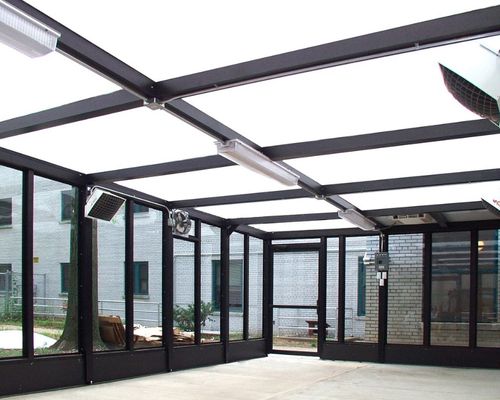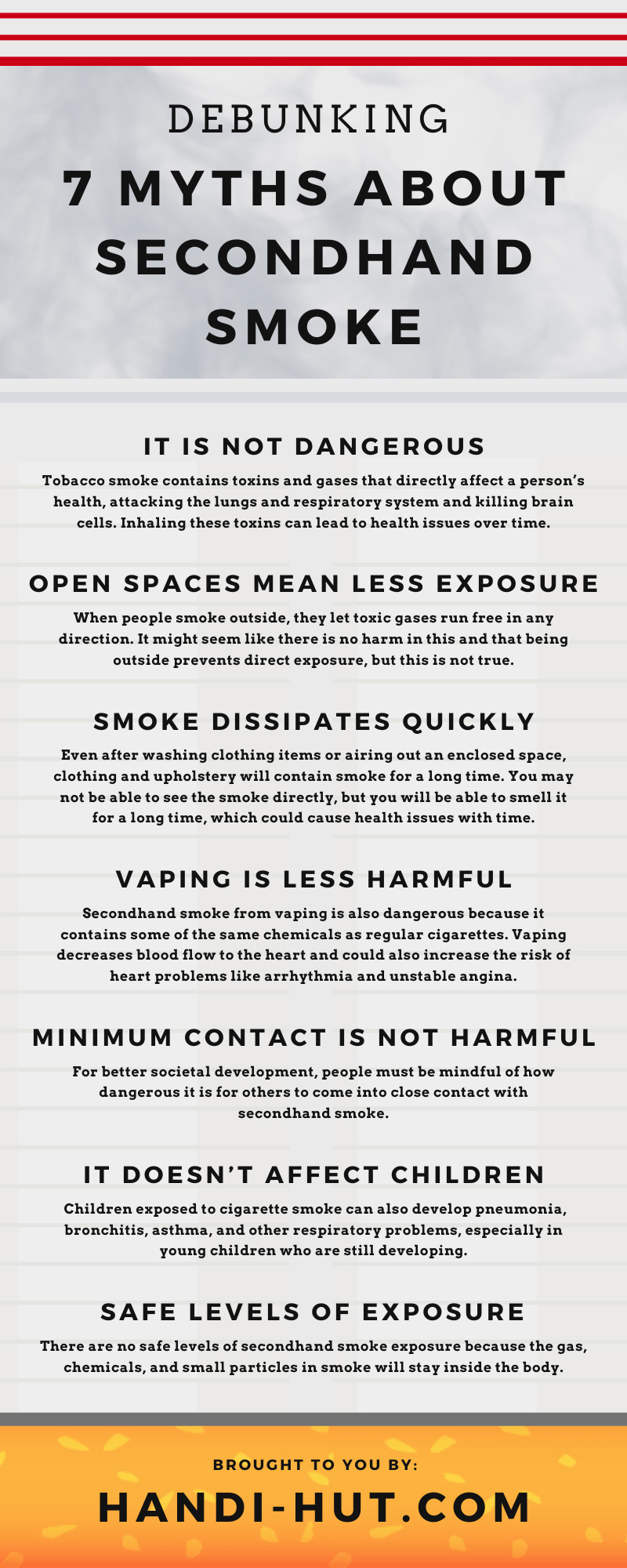
Cigarettes release chemicals that quickly expand into the environment, which can cause serious problems for the people who inhale them. Tobacco use first appeared thousands of years ago in the sacred rituals of indigenous civilizations.
Over time, the composition of cigarettes has evolved. People now smoke tobacco recreationally and socially for its stimulative effects. At first, people did not know how dangerous smoking tobacco is, but research has shown that it has many health consequences.
Smoking affects everyone around the smoker; some people believe that only the smoker suffers from the consequences, but this is untrue. These myths about secondhand smoke will help you understand how dangerous and irresponsible it is to expose people to secondhand smoke.
It Is Not Dangerous
People exposed to secondhand cigarette smoke have a high percentage of developing health issues and diseases. Tobacco smoke contains toxins and gases that directly affect a person’s health, attacking the lungs and respiratory system and killing brain cells. Inhaling these toxins can lead to health issues over time.
Cancer is one of the main results of constant exposure to cigarette smoke; those exposed have up to a 30 percent chance of developing lung cancer as passive smokers. The best solution is to stay away, even in open spaces, and limit direct exposure as much as possible.
Open Spaces Mean Less Exposure
When people smoke outside, they let toxic gases run free in any direction. It might seem like there is no harm in this and that being outside prevents direct exposure, but this is not true. Open spaces are equally dangerous for non-smokers to inhale these gases.
Most restaurants and public places must implement safety rules and guidelines to assign specific smoking areas, ban the activity completely, or find proper accommodations. A smoking shelter is a perfect solution to this problem because it creates a designated smoking space away from non-smokers.
Smoke Dissipates Quickly
Even after washing clothing items or airing out an enclosed space, clothing and upholstery will contain smoke for a long time. You may not be able to see the smoke directly, but you will be able to smell it for a long time, which could cause health issues with time.
The best solution is again to have a designated smoking area outside where smoke can quickly dissipate. That said, the smoker will carry the smoke on their clothes, which will transfer in a smaller percentage into an enclosed space. Smoke particles can attach to materials like fabric and hair and stay there for days.
Vaping Is Less Harmful
With technology developing new and alternative solutions to common practices, cigarettes have also evolved. Vapes are new smoking devices that claim to be less harmful. Vaping is the “solution” to traditional cigarettes; these devices use oils and capsules that heat liquids to create an aerosol with nicotine and flavored substances.
But secondhand smoke from vaping is also dangerous because it contains some of the same chemicals as regular cigarettes. Vaping decreases blood flow to the heart and could also increase the risk of heart problems like arrhythmia and unstable angina. These can develop into more serious issues and even result in a heart attack.
Vaping can hurt brain development in children, raise blood pressure, and narrow arteries. A common myth about secondhand smoke is that vaping reduces damage by using natural ingredients in a steam that only affects direct smokers. But the truth is, it’s just as harmful.
Minimum Contact Is Not Harmful
Just like inhaling smoke from a fire for a few seconds could cause irreversible damage, inhaling secondhand smoke from cigarettes could cause a chain reaction of health issues. Genetics and lifestyle greatly influence how seriously smoke affects a person; it is important never to make assumptions about someone’s health.
For better societal development, people must be mindful of how dangerous it is for others to come into close contact with secondhand smoke. Smoking in public is constantly losing approval, because its dangerous for everyone and uncomfortable for non-smokers, with stricter laws that limit the space in which people can smoke cigarettes.
It Doesn’t Affect Children
There is a phenomenon called sudden infant death syndrome (SIDS) that affects children exposed to smoke. Children exposed to cigarette smoke can also develop pneumonia, bronchitis, asthma, and other respiratory problems, especially in young children who are still developing. Even smoking one cigarette in front of a child could cause health problems and set a bad example, which could lead to children making the wrong decisions to start smoking.
Children have stronger immune systems, especially with a healthy diet and exercise, but they are more likely to develop health issues from toxic chemicals. Around 400 children die yearly from secondhand smoke. Children cannot help who smokes around them, so it’s the adult’s responsibility to refrain from exposing the child to smoke.
There Are Safe Levels of Exposure
There are no safe levels of secondhand smoke exposure because the gas, chemicals, and small particles in smoke will stay inside the body. To minimize damage, choose smoke-free restaurants, keep kids away from relatives who smoke, and avoid indoor places that allow smoking, like bars and casinos.
Sadly, some establishments rely heavily on smoking crowds for business. Smoking is a choice, and like many other activities, people can decide how they want to live their lives as long as they don’t affect others directly—and to avoid affecting others, people must be conscious of where they smoke.
Society keeps moving toward a greener, safer environment that minimizes health issues for everyone. Removing an activity that society has partaken in for so many years is challenging. Still, with younger generations having a better understanding of how dangerous it is, this could change rapidly.
Many people reach for nicotine for stress relief, but there are healthier ways to relieve stress. Smoke affects everyone, and there is no safe way to avoid or minimize damage; the best solution is to spread awareness and act on it.
A quick and effective solution to minimize secondhand smoke is for businesses to provide designated smoking areas away from the non-smoking population. At Handi Hut, we offer professional installation and the right equipment to cover your business needs and provide a safer space for everyone.

